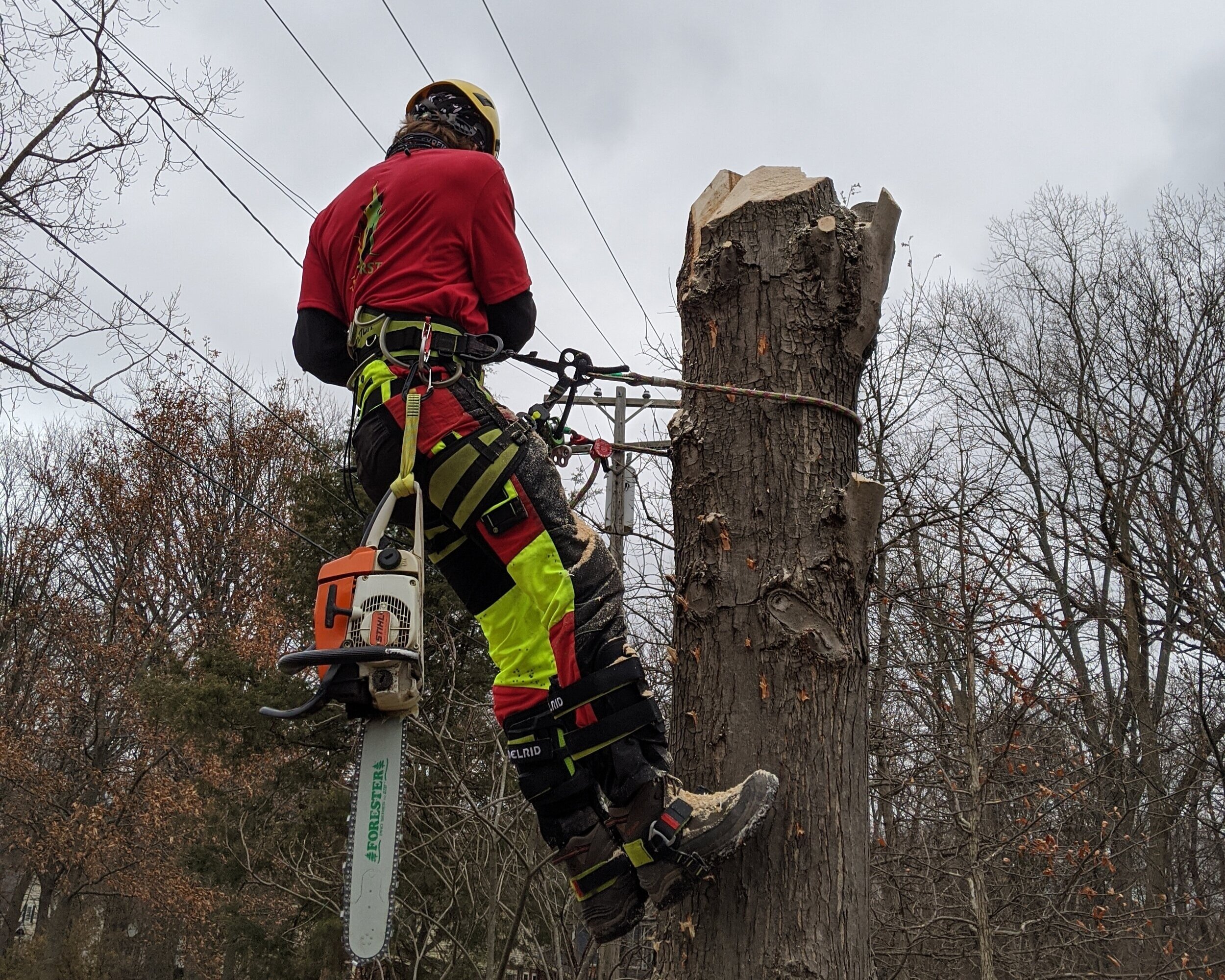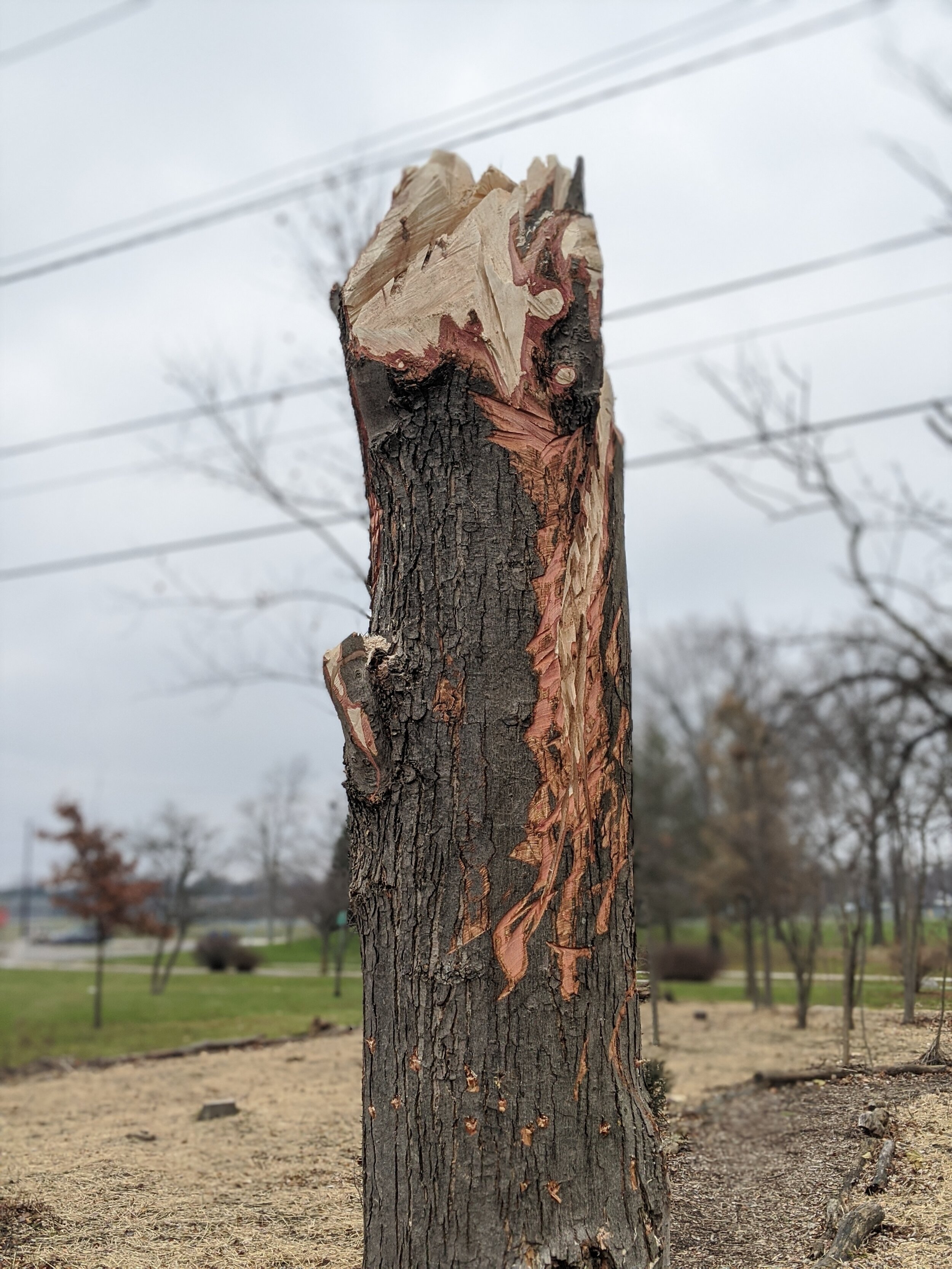Silver Maple Snag
The Royal Oak Nature Society is working on creating an oak savanna located in the Royal Oak Arboretum. This project showcases all of the cool and unique oak species native to our area displayed in a natural setting. Oak savannas were once more plentiful environment types, but as humans populated the country and fire control become more prevalent, the oak savannas have been an ever-shrinking habitat type.
Several oak species have already been planted in the oak savanna at the Arboretum. To accommodate more trees, two silver maples had to be removed from the area. Rather than simply removing the trees entirely, their trunks were retained as wildlife snags!
Snags are dead trees or dead tree parts. They’re integral to any healthy forest with wildlife, just like our urban forest we live in in Royal Oak. The snag is utilized by wildlife in a myriad of ways as food, shelter, a place to raise young, etc..
Scroll down to see some of the photos of the project!
Jack mid-way through the tree’s crown.
Jack at the top of one of the maple’s crowns
Above, Jack can be seen working his way through the tree’s crown. Both silver maples had to be dismantled because of the small oak trees below.
Once the tree’s crown was removed, the trunk can then be carved.
There are several benefits to carving the snag up. Making tree look like it broke naturally attracts larger wildlife like woodpeckers, as they’ve evolved to search for these patterns in the forest. Exposing the inside of the wood increases entry points for fungi to then begin decomposing the wood. Once the snag has weathered and decayed a bit, it really begins to attract wildlife.
Jeremiah gets to work on carving the snag.
A cavity carved into the trunk with a chainsaw and auger drill. This structure gives wildlife protection from extreme temperatures and predators.
An angle of the finished snag, about 14 feet tall. The top of the snag is carved into what’s called a ‘coronet’. The object here is to simulate a natural break, as if the tree failed on its own.






